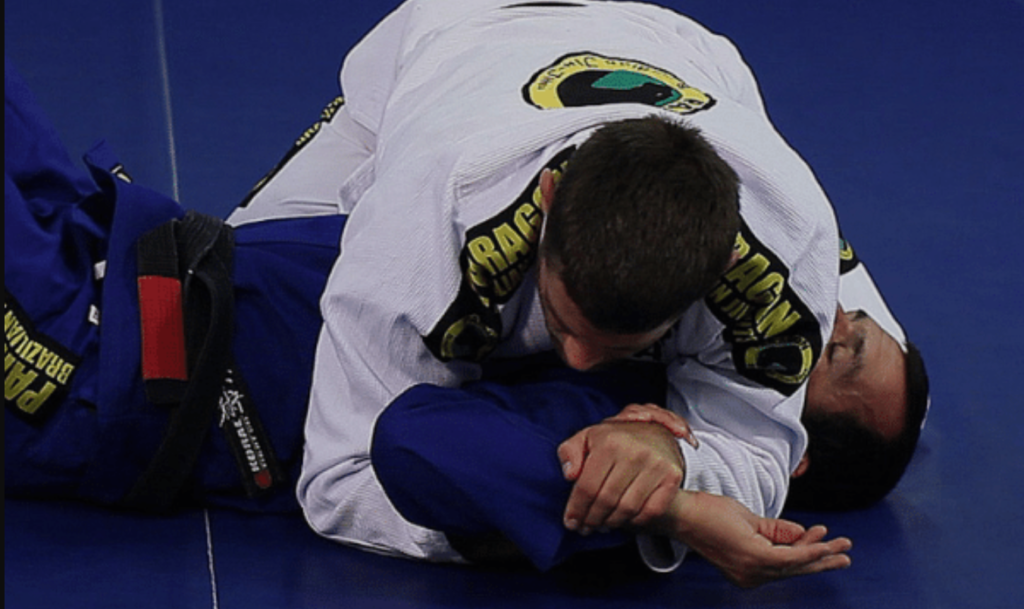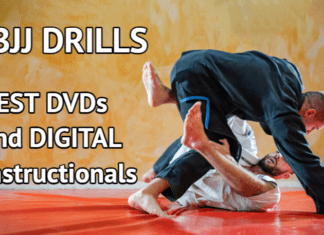
Brazilian Jiu-Jitsu is a grappling martial art that requires a great deal of strength, flexibility, and endurance, especially in the shoulders. Due to the nature of the sport, BJJ athletes are prone to shoulder injuries such as rotator cuff tears, shoulder impingement, and dislocations. Therefore, it is essential for BJJ athletes to focus on shoulder strength and injury prevention in their training. One way to achieve this is through a dedicated kettlebell shoulder workout routine. Kettlebells are versatile equipment that can help improve shoulder mobility, stability, and strength, ultimately reducing the risk of shoulder injuries in BJJ and MMA athletes.
Common Shoulder Injuries in BJJ
Common shoulder injuries are prevalent among Brazilian Jiu-Jitsu (BJJ) athletes due to the intense physical demands of the sport. Some of the most common shoulder injuries that BJJ athletes experience include rotator cuff tears, shoulder impingement, and dislocations.
- A rotator cuff tear can occur when the rotator cuff muscles, which are responsible for stabilizing the shoulder joint, become overstretched or torn.
- Shoulder impingement is another common injury that can result from the rotator cuff or bursa becoming pinched between the shoulder blade and humerus bone.
- Shoulder dislocations, on the other hand, can occur when the humerus bone pops out of the shoulder socket due to a sudden impact or fall.
These shoulder injuries can occur during BJJ training due to the nature of the sport, which involves a lot of grappling, throwing, and joint manipulation. These movements put a significant amount of stress on the shoulder joint, which can lead to injury if proper precautions are not taken. Additionally, grapplers and MMAfighters may also experience shoulder injuries due to overuse or repetitive strain from training too frequently or improperly.
To prevent shoulder injuries in BJJ, athletes should focus on building strength, mobility, and stability in their shoulder joints. This is where kettlebell workouts come in handy.
How Kettlebell Workouts Can Prevent Shoulder Injuries in BJJ
By incorporating kettlebell exercises into your training routine, you can improve your shoulder strength and stability, ultimately reducing your risk of shoulder injuries.
Improved shoulder strength and stability can prevent injuries during BJJ training by increasing the athlete’s ability to maintain proper technique and form. When a grappler’s shoulders are weak or unstable, they are more susceptible to incorrect positioning or overextension, leading to strain or injury.
A kettlebell workout can help you maintain proper form, reducing the risk of injury during training and competition. There are several specific kettlebell exercises that can help with injury prevention in BJJ.
The 5 Best Shoulder Exercises With A Kettlebell
The top exercises you can use to put together a kettlebell shoulder workout for Jiu-Jitsu and MMA are a blend of strength and mobility exercises, done with one or two kettlebells. The following 5 are your best bet, but you don’t have to use all of them in every workout you do using a kettlebell.
1. One Arm Kettlebell Swing
The one-arm kettlebell swing is a popular exercise among these athletes due to its ability to develop full-body strength and explosive power. It should be a staple in any kettlebell shoulder workout for combat athletes.
-
What Are Kettlebell Swings?
Kettlebell swings are a dynamic exercise that involves swinging a kettlebell between the legs and up to chest height. This exercise targets the posterior chain muscles, including the glutes, hamstrings, and lower back, while also engaging the shoulders, core, and grip strength.
-
Kettlebell Swing Benefits
The one-arm kettlebell swing offers numerous benefits for grappling and MMA athletes. It helps to improve the explosive power of the shoulders and hips, which is essential for throwing opponents and executing takedowns. Additionally, the exercise improves grip strength.
-
How to do the One Arm Kettlebell Swing?
- To perform the one-arm kettlebell swing, start by standing with your feet shoulder-width apart and the kettlebell on the ground in front of you.
- Hinge at the hips and grasp the kettlebell with one hand, keeping your arm straight and shoulder blades retracted.
- Engage your glutes and hamstrings, and use your momentum to swing the kettlebell between your legs, then explosively extend your hips and swing the kettlebell up to chest height.
- Lower the kettlebell back down between your legs and repeat for the desired number of repetitions.
-
Variations of Kettlebell Swing
There are several variations of the kettlebell swing that athletes can incorporate into their training routine for additional challenge and variety.
- The double kettlebell swing involves using two kettlebells, one in each hand, to increase the load and challenge the core and grip strength.
- The alternating kettlebell swing involves using one kettlebell, switching the hand that controls it at the highest portion of the swing, developing hand-eye coordination and speed.
2. Kettlebell Halos
One exercise that’s particularly effective for targeting the shoulders is the kettlebell halo. It is low-impact and one of the best mobility and strength exercises for shoulder development.
-
What Are Kettlebell Halos?
The kettlebell halo is a shoulder exercise that involves holding a kettlebell upside down by the handle and moving it around your head in a circular motion. This exercise targets the shoulders, upper back, and core, and it’s particularly effective for improving shoulder mobility and stability.
-
Kettlebell Halo Benefits
The kettlebell halo offers several benefits for grappling and MMA athletes. It improves shoulder mobility and flexibility, as well as targeting the muscles of the upper back, which are important for maintaining good posture during grappling exchanges. The kettlebell halo also helps increase shoulder stability, which is essential for preventing injuries during training and competition.
-
How to do the Kettlebell Halo?
- To perform the kettlebell halo, start by holding the kettlebell upside down by the handle with both hands.
- Stand with your feet shoulder-width apart and engage your core.
- Move the kettlebell in a circular motion around your head, making sure to keep your elbows close to your body and your shoulders relaxed.
- Complete the desired number of repetitions in one direction before switching to the other direction.
-
Variations of Kettlebell Halos
There are several variations of the kettlebell halo that can challenge your shoulder stability and mobility in different ways.
- One variation is to perform the exercise while kneeling, which can increase the demands on your core and upper back muscles.
- Another variation is to perform the exercise with one arm at a time, which can help to improve shoulder asymmetry and balance.
- Finally, you can add a press at the top of the halo motion to make the exercise more challenging and improve shoulder strength and power.
3. Kettlebell Windmills
The windmill is truly an irreplaceable exercise when it comes to a kettlebell shoulder workout for functional strength and improved upper body performance.
-
What Are Kettlebell Windmills?
The kettlebell windmill is a shoulder exercise that targets the shoulders, upper back, and core. It involves holding a kettlebell above your head with one arm while simultaneously bending at the waist and lowering the opposite hand toward the ground. This exercise is particularly effective for improving shoulder mobility and stability.
-
Kettlebell Windmills Benefits
The kettlebell windmill offers several benefits for grappling and MMA athletes.
It improves shoulder mobility, which is crucial for executing throws, takedowns, and submissions. it also helps develop upper body balance in a wide range of angles, as the range of motion of this exercise is pretty big.
-
How to do Kettlebell Windmills?
To perform the kettlebell windmill, start by standing with your feet shoulder-width apart and holding a kettlebell in your right hand above your head.
- Rotate your left foot outwards slightly and bend your left knee while keeping your right leg straight.
- Slowly hinge at your hips and lower your left hand towards the ground while keeping your eyes on the kettlebell.
- Pause briefly at the bottom of the movement before returning to the starting position.
- Complete the desired number of repetitions before switching to the other side.
-
Variations of Kettlebell Windmills
One variation is to perform the exercise with two kettlebells, holding the second one in the arm that goes to reach toward the ground.
Another variation is to perform the exercise with a slightly wider stance to increase your hip mobility and range of motion.
4. Kettlebell Bottoms-Up Press
The Kettlebell Bottoms-Up Press is a challenging exercise that targets the shoulders, triceps, and core. This exercise involves holding the kettlebell upside-down, with the bottom of the kettlebell facing up, and pressing it overhead. It requires a lot of shoulder stability and control to keep the kettlebell from flipping over.
-
What Are Kettlebell Bottoms-Up Presses?
Kettlebell Bottoms-Up Presses are a variation of the traditional overhead press exercise. The difference is that the kettlebell is held upside-down, with the bottom facing up, and the handle is gripped tightly to prevent it from flipping over. It can be done with one or two kettlebells, depending on your strength level and training goals.
-
Kettlebell Bottoms-Up Press Benefits
The Kettlebell Bottoms-Up Press offers a number of benefits for grappling and MMA athletes. This exercise primarily helps improve shoulder strength and stability, which can help prevent injuries during training and competition. It also requires a lot of grip strength,
-
How to do the Kettlebell Bottoms-Up Press?
To perform the Kettlebell Bottoms-Up Press, start by holding the kettlebell upside-down, with the bottom facing up and the handle gripped tightly.
- Press the kettlebell overhead, keeping it upside-down and stable throughout the movement.
- Lower the kettlebell back down to the starting position and repeat for the desired number of repetitions.
- It’s important to maintain proper form throughout the exercise and to start with a lighter weight to build up strength and stability.
-
Variations of Kettlebell Bottoms-Up Press
There are several variations of the Kettlebell Bottoms-Up Press that athletes can try to challenge themselves and target different areas of the shoulders and core.
- One variation is the Half-Kneeling Bottoms-Up Press, which involves performing the exercise in a half-kneeling position to challenge core stability and balance.
- Another variation is the One-Arm Bottoms-Up Press, which involves performing the exercise with one arm at a time to focus on unilateral strength and stability.
5. Kettlebell Armbar
The kettlebell armbar is an exercise that can help build shoulder strength, and stability. This exercise involves lifting a kettlebell from a supine position while keeping the arm completely straight and turning to your side as if you were going to perform a Turkish get-up.
-
What Are Kettlebell Armbars?
Kettlebell armbars are a type of kettlebell exercise that focuses on building shoulder stability. The naming, as you might’ve guessed, is down to the similarity between the final position for finishing a BJJ armbar and the arm position during this exercise.
-
Kettlebell Armbar Benefits
Kettlebell armbars are a highly effective exercise for improving shoulder and stability. This exercise targets the rotator cuff muscles, which are essential for shoulder health and injury prevention.
-
How to do the Kettlebell Armbar?
To perform the kettlebell armbar, lie on your back with your legs straight.
- Hold the kettlebell in one hand with your arm extended completely as if bench pressing.
- Bend the leg on the side where you’re holding the kettlebell and extend the free arm over your head.
- Push with the bent leg so that you turn sideways, transferring the leg in front of you when you’re tilted 90 degrees in regard to the starting position.
- Hold the position with the arm outstretched for a desired amount of time.
- Get back to the starting position.
- Repeat on the other side.
-
Variations of Kettlebell Armbars
The kettlebell armbar also works great if you hold the kettlebell upside down, like for the Bottoms-Up press. Be mindful, though, that this is a much more difficult variation of the exercise and only introduce it into your kettlebell shoulder workout when you’ve mastered the basic one.
Specific Kettlebell Shoulder Workout for BJJ
If you’re looking to prevent shoulder injuries in BJJ, incorporating a kettlebell shoulder workout into your training routine can be a great way to build strength and stability in your shoulders. Here’s a sample circuit kettlebell shoulder workout you can try involving some of the exercises above:
When incorporating these exercises into your training routine, start with a weight that you can manage with good form and gradually increase the weight as you get stronger. Aim to do this workout 2-3 times per week in addition to your regular BJJ training. By building strength and stability in your shoulders with a kettlebell shoulder workout, you can help prevent injuries and improve your performance on the mat.
Kettlebell Jiu-Jitsu FAQ
-
Are kettlebells good for BJJ?
Yes, kettlebells can be good for BJJ as they can improve overall strength, mobility, and endurance, which are all beneficial for BJJ practitioners.
-
Are kettlebells good for shoulders?
Yes, kettlebells can be good for shoulders as they can improve shoulder strength, stability, and mobility, reducing the risk of shoulder injuries.
-
Are kettlebell swings good for shoulders?
Also yes, kettlebell swings can be good for shoulders as they can improve shoulder strength, power, and endurance.
-
Are kettlebells good for martial arts?
Yes, kettlebells can be good for martial arts as they can improve overall strength, mobility, and endurance, which are all beneficial for martial artists.
-
Can you build big shoulders with kettlebell?
Yes, you can build big shoulders with kettlebells by doing exercises that target the deltoids, such as overhead presses, lateral raises, and front raises, with heavy kettlebells.
-
Is it OK to do kettlebells everyday?
It depends on your fitness level and goals. It is generally recommended to have at least one rest day between kettlebell workouts to allow for recovery.
-
How heavy should my kettlebell be?
The weight of your kettlebell depends on your fitness level, goals, and the exercise you are doing. As a general guideline, beginners can start with a 8-12 kg kettlebell for upper body exercises and 12-16 kg for lower body exercises.
-
Are weights good for BJJ?
Weights can be good for BJJ as they can improve overall strength and conditioning, which can enhance BJJ performance and reduce the risk of injuries.
-
Why do fighters use kettlebells?
Fighters use kettlebells because they can improve overall strength, power, and endurance, which are all important for combat sports performance.
-
Is a kettlebell better than a barbell for MMA?
It depends on the exercise and the individual’s goals. Kettlebells can be a great tool for MMA training as they can improve functional strength, power, and endurance, but barbells can also be useful for strength training.
Conclusion
Shoulder strength and injury prevention are essential for BJJ athletes to perform at their best and avoid potential injuries. A kettlebell shoulder workout is an effective way to target the shoulder muscles and prevent injuries in BJJ and MMA. By incorporating kettlebell exercises into a training routine, you can greatly improve your performance and reduce the risk of shoulder injuries. Remember to always use proper form and consult with a trainer or healthcare professional before starting any new exercise routine.











































